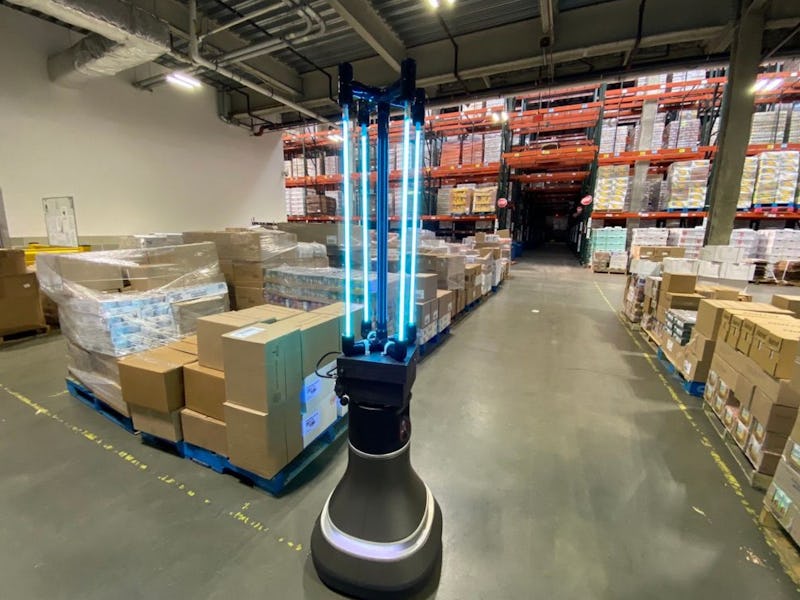Tech
This MIT robot could autonomously disinfect local food banks
The robot could be used in factories, schools, and other high-traffic places.

MIT’s Computer Science and Artificial Intelligence Laboratory (CSAIL) is trying to make complex spaces easier to sanitize. In collaboration with Ava Robotics and the Greater Boston Food Bank (GBFB), CSAIL team created a UVC structure that disinfects surfaces and neutralizes coronavirus particles lingering in the air. Fitted atop an Ava Robotics base, the robot could be trained to navigate spaces autonomously in the future.
The robot — The ultraviolet light works best on directly visible surfaces, but even reflected light in nooks and crannies is effective. During tests at GBFB’s warehouse, the prototype robot was teleoperated to get the lay of the land, but it’s equipped to navigate the area without supervision someday. The robot slowly moves through the 4,000 square foot warehouse, neutralizing 90 percent of coronaviruses on surfaces within half an hour.
“As we drive the robot around the food bank, we are also researching new control policies that will allow the robot to adapt to changes in the environment and ensure all areas receive the proper estimated dosage,” said Alyssa Pierson, CSAIL research scientist and technical lead of the lamp assembly team, in a statement. “We are focused on remote operation to minimize human supervision, and therefore, the additional risk of spreading COVID-19, while running our system.”
As dosages and algorithms are adjusted, the neutralization rate could be higher and the robot could easily roam the area while reacting to changes in the environment.
Robots and COVID-19 — This prototype is in line with a similar robot Amazon is working on for future use in its warehouses, but these are hardly the only robots working against SARS-CoV-2. Along with similar disinfecting units, robots have proven to be useful couriers for medical supplies and even social distancing watchdogs.